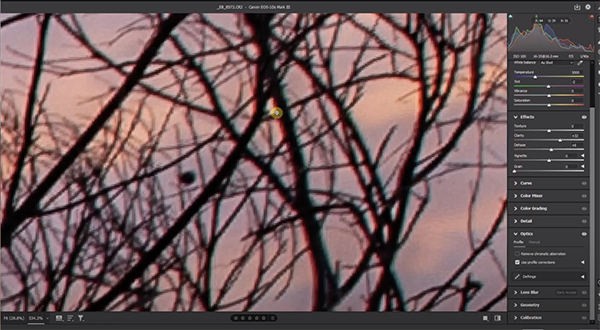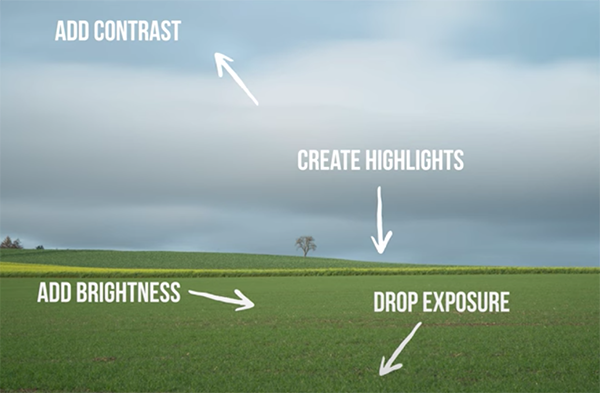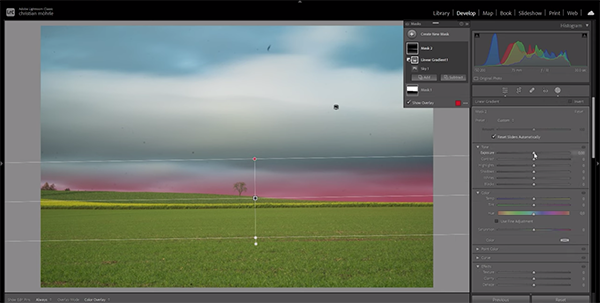Dyson is calling its new launch its quietest and most powerful air purifier yet – get a first look
Dyson launches its most quiet yet powerful air purifier – perfect for covering large spaces
If you’ve been following our image-processing tutorials you likely understand that this task often comprises a number of small, simple enhancements. But when taken as a whole, these seemingly minor adjustments can have a huge effect on the look of your work.
One minor tasks that can help transform a photo is the use of Photoshop’s lens corrections to eliminate distortion and chromatic aberration. This straightforward skill is simple enough for all users, and that’s exactly what you’ll learn how to do in today’s instructional video from photographer Barry Beckham.
Beckham regularly posts tutorials for amateur shooters with an emphasis simple methods for improving image quality. In barely seven minutes he demonstrates how to harness the power of Photoshop’s Lens Corrections to rid photos of elements that detract from their impact.

Both of the problems discussed are caused by the distortion within all of our lenses. Fortunately, because these are familiar issues, they can be easily corrected with image-editing software. In fact, Beckham says resolving these problems should be one of the first things you do, just like cropping the photo to refine composition.
All you have to do to get started is open Lightroom’s Optics panel and focus your attention on two of the several tools. Beckham begins by clicking on Use Profile Corrections and you’ll see how his before/after images illustrate the immediate improvement. The change is often subtle, but it’s more apparent with photos captured with wide-angle lenses that may impart a curved horizon.
The second option, and one that Beckham considers more important is Remove Chromatic Aberration. Before demonstrating how this works he explains the concept of chromatic aberration and illustrates the effect it can have on an image. By zooming in on the branches and twigs in a tree against the bright background of his shot you can see clearly cyan and magenta fringing that shouldn’t be there. This is a common concern in areas of high contrast.

This problem becomes even worse if you increase Vibrance and Saturation during the editing process. But here’s the trick: when you click on Remove Chromatic Aberration, the ugly artifacts are effectively removed. In fact, Beckham says that he has so much confidence in the two aforementioned adjustments that he routinely ticks these two boxes and proceeds with his edit.
Interestingly, Beckham always does this without closely examining a photo because it works so well. If you enjoyed this quick episode pay a visit to Beckham’s instructional video where you’ll discover more simple tips and tricks.
And be sure to take a look at another image-processing tutorial we posted in which the instructor provides free Lightroom presets, an explanation on how to use them, and several powerful tips for editing sunset and sunrise photos for maximum impact.
We regularly post editing tutorial that help you enhance promising images that fall a bit shott, and this one from the popular PHLOG Photography YouTube channel is both quick and very effective.
German landscape photographer Christian Mohrle is a regular on this page, and today’s episode demonstrates how to manipulate and “shape the light” in photos captured under less-than ideal conditions. All it takes is a few simple tools in Lightroom to keep drab photographs out of the trash. As always, we suggest downloading Mohrle’s Raw file with the link beneath the video so that you can make the adjustments yourself as they’re explained.
Mohrle typically begins his edits with a few basic global adjustment to create a solid starting point for the powerful selective enhancements that follow. The first step for today’s flat, contrastless shot is changing the profile from Adobe Color to Adobe Landscape. As you’ll see, doing this instantly boosts saturation.

Other preliminary modifications are dropping exposure to darken the base image, lowering Vibrance, and increasing color temperature to neutralize an unwelcome color cast, balance the tone, and warm up the photo.
The image is definitely improved, but it still appears far too flat, and here’s where the meat of the tutorial occurs. Mohrle rectifies this problem and others with Lightroom’s Masking tool and the light shaping process begins. His first target is the sky where his goals include adding drama to the top area the shot, accentuating details in the clouds, and further boosting Saturation in this portion of the shot.
The next target is the foreground that’s still lacking in contrast, and Mohrle walks you through a few selective enhancements that make a very impressive difference. Here he uses a Linear Gradient to raise exposure, “to make it appear that sunlight is falling right on the field.” He also adjusts White Balance to add a very subtle Golden Hour effect.

The final steps in the remarkable transformation, include careful color grading, a bit of sharpening, and a quick cleanup to remove several distracting dust spots that detract from the photo. It’s quite a big improvement in less than 10 minutes, and one you can easily accomplish yourself.
If landscape photography is your thing be sure to check out Mohrle’s popular YouTube channel where there are many more post-processing tips and tricks to learn.
We also suggest watching the earlier tutorial we posted from another accomplished pro who explains two common editing mistakes that ruin landscape and wildlife photographs. Then he provides straightforward tips for doing things right.
